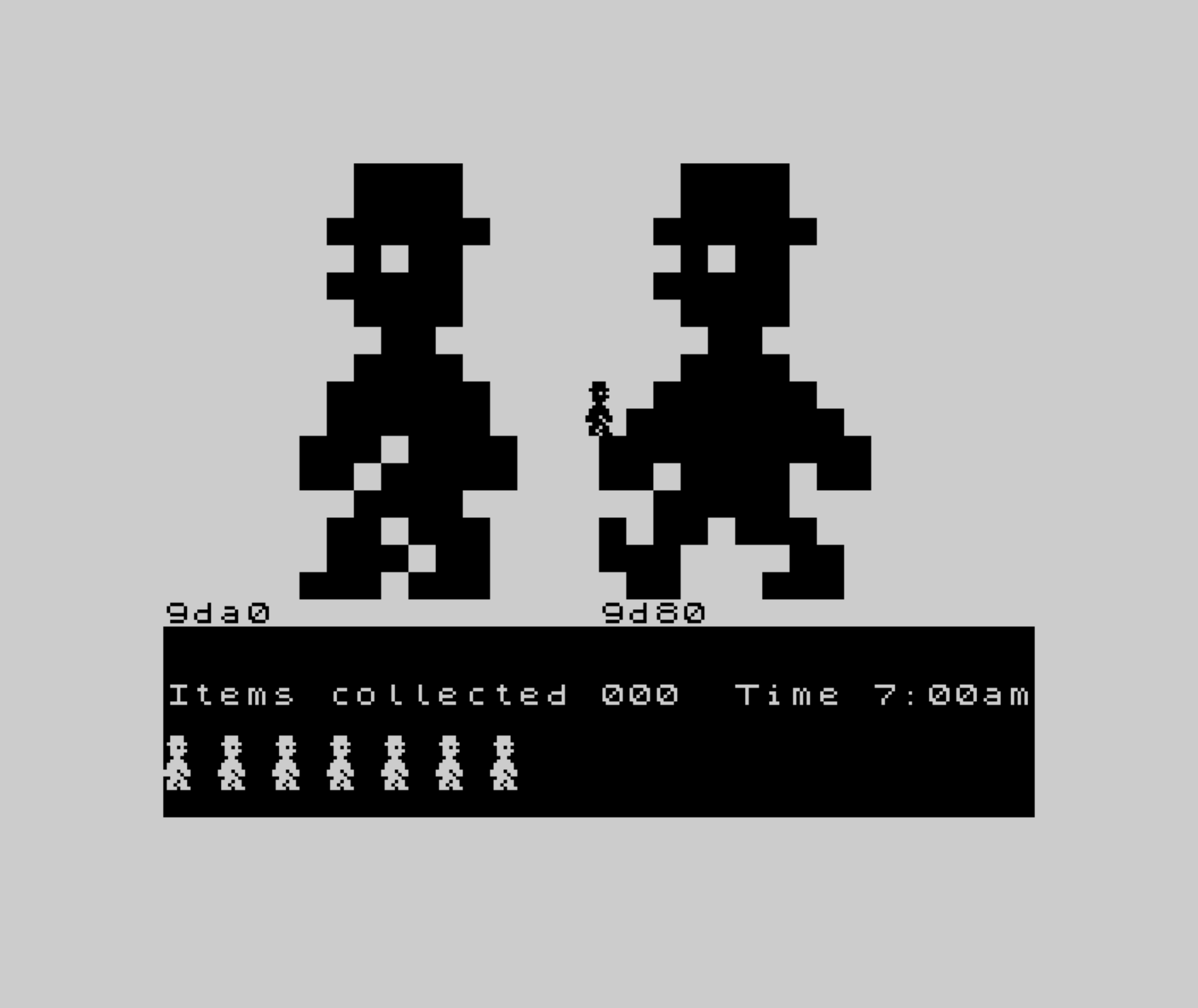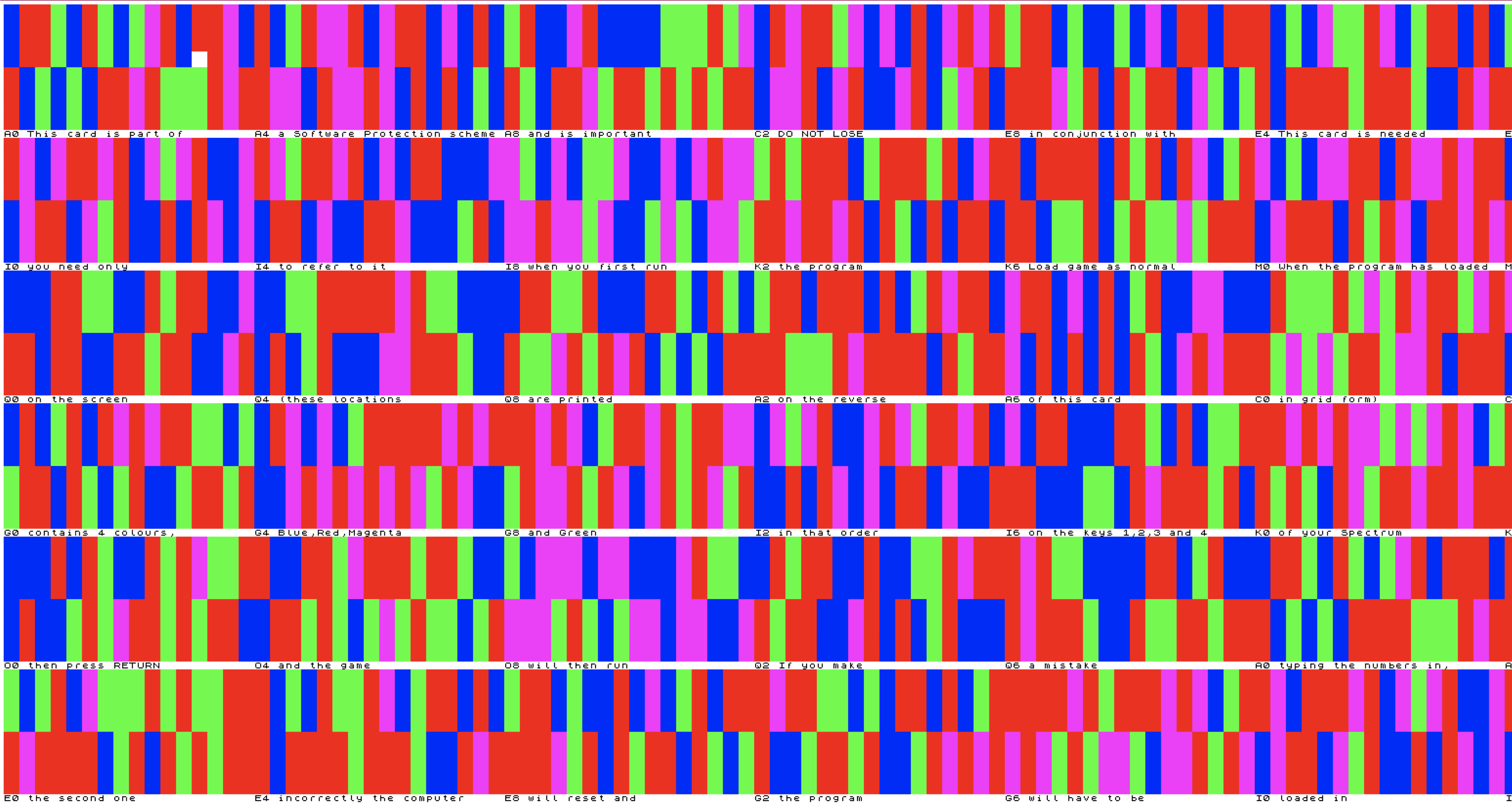In the early days of computer gaming, developers and publishers used various creative physical copy protection systems to prevent unauthorized copying and distribution of their games. These methods usually required the user to possess a specific physical item (“Feelie”) that came with the game in order to play it. Some notable examples include:
Code Wheels: Code wheels were physical devices consisting of several circular pieces of cardboard or plastic, which the user had to align correctly to reveal a specific code. Games like Monkey Island 2: LeChuck’s Revenge and Pool of Radiance used code wheels. Manual-Based Copy Protection: Some games required players to look up specific information from the game manual to proceed. For example, the game Elite required players to enter a specific word from the manual, while The Secret of Monkey Island required players to match pirate faces with their names using a provided code sheet. Lookup Tables: In some games, players had to reference a table of codes or information that came with the game to proceed. For example, in the game SimCity, players needed to look up a specific code in a table of city names and population numbers. Physical Maps and Charts: Some games included physical maps or charts that were necessary to navigate the game world. For example, the game Ultima IV came with a cloth map and a booklet with a series of runes, both of which were essential for playing the game. Special Devices: Some games came with special devices that were required to play the game. For example, the game Starflight included a plastic overlay that the player had to place on their keyboard to decipher alien messages.
The ZX Spectrum game Jet Set Willy used a relatively simple copy protection method involving a color-coded card that came with the game. This card was called the “Software Protection System” and was also known as the “Lenslok” system.
The Lenslok device was a small, foldable plastic prism that the player had to hold up to the screen. When the game started, it would display a scrambled two-letter code. The player had to use the Lenslok device to decode the scrambled letters by looking through the plastic prism at the correct angle. Once the two letters were decoded, the player had to enter them using the keyboard to proceed with the game. If the entered code was correct, the game would start, but if the code was incorrect, the game would refuse to load.
This method of copy protection relied on the physical Lenslok device, making it more difficult for unauthorized copies of the game to function properly. Users who obtained a copy of the game without the original Lenslok device would struggle to decode the scrambled letters and, as a result, would be unable to play the game.
However, the Lenslok system was not without its flaws. Many users found it difficult to use and set up, and it was not always compatible with all television sizes and resolutions. This sometimes led to frustration for legitimate game owners who struggled to get the game to work even with the original Lenslok device.
JODI’s Jet Set Willy Variations created 6 or more modifications to the game, changing the level topology or graphics in the process. This included turning the printed game story into levels that could be walked through,

Turning the game sprites into navigable levels, here willy climbs his own walking animation

It also interestingly turned the printed copy protection cypher into playable levels, which were as a result impossible to navigate.
Different exhibitions of the work have highlighted the different forms the work can take, as prints, playable in emulation on modern hardware, on original hardware and as the physical media of cassette tape, as code. These forms of Jet Set Willy, in their various deconstructions and re-topologizations, show the tension between fluidity and materiality and between reproducibility and control.
In my practice at the moment I’m currently grappling with how to present Grotto in a gallery space. I’ve prototyped a number of microcontroller-powered devices that connect to the game and offer novel ways to get feedback and to trigger player actions. This has been in the service of the idea that People are unwilling to deeply engage with a videogame (especially a kind-of-cryptic videogame) in a gallery space. Also, I’ve felt a lot of aversion to introducing the possibility of an imbalance between exposing myself and limited engagement from viewers, ie. someone exposes a personal piece of writing etc on a screen and someone with no investment or context walks by and has a reaction (or even worse no reaction).
I’ve had good feedback from peers that it seems like I’m doing a lot of interesting fabrication for the purposes of hiding the game, instead of trying to open it up and help people interact with it. My advisor has tempered this with an aknowledgement that the game itself is about hiding in some ways, so I’ve been looking for some way to both expose and hide the game and its contents.
Today in conversation with Niki, I talked through the idea that the physical aspects of the game installation could work in the ways that copy protection did for early computer games -> an interplay between printed books and projection and controller act as a sort of puzzle box that encloses and exposes, connecting the information space to the material space (I never know what to call these, because I dislike ‘virtual’ and disagree with ‘immaterial’. Maybe the visionary space/built space?)